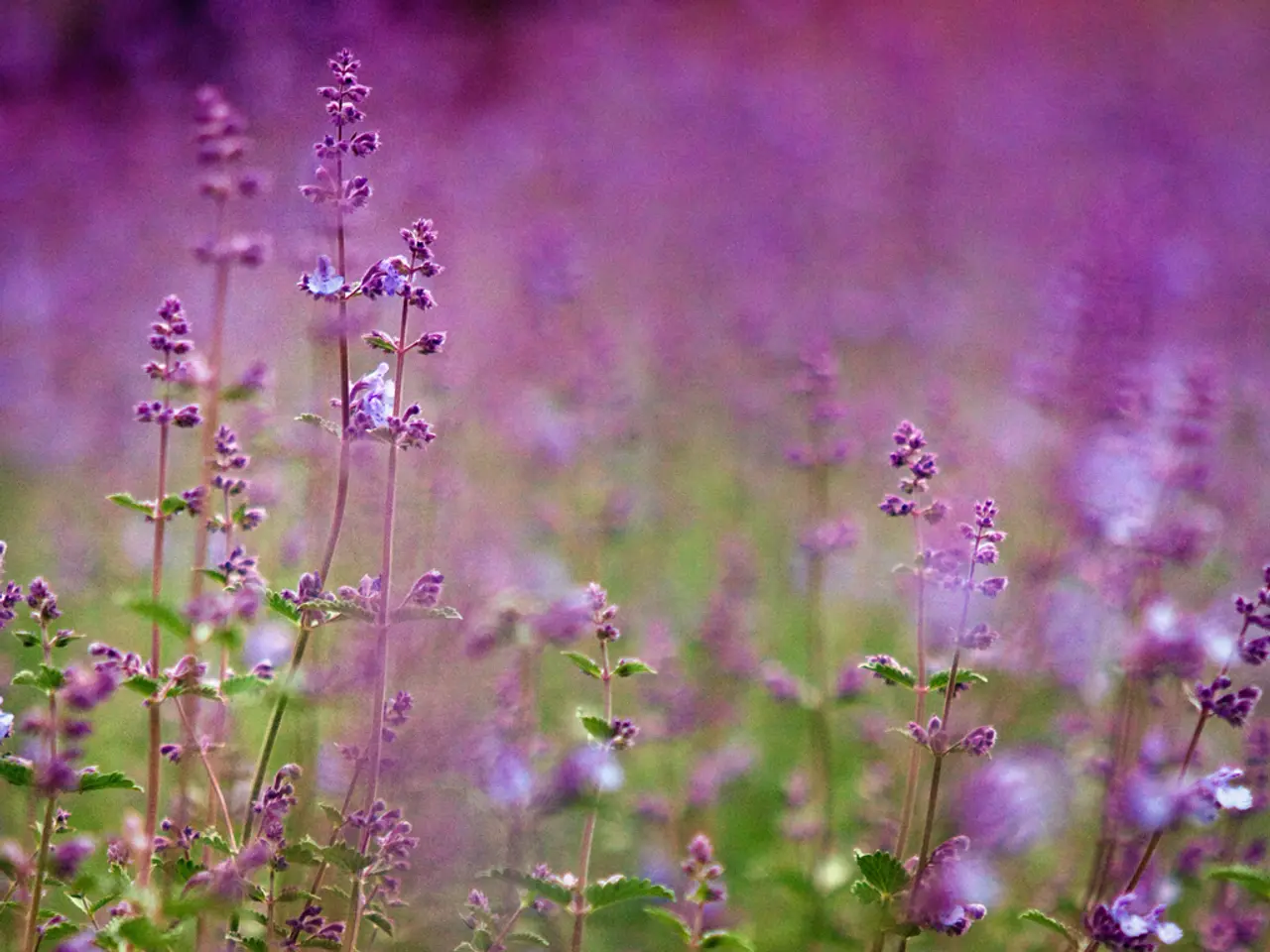Restoring Wilted Lavender Bushes: A Step-by-Step Guide
Reviving a Dying Lavender Plant: A Comprehensive Guide
Lavender, with its fragrant flowers and soothing aroma, is a popular choice for gardens around the world. However, these delicate plants can sometimes fall victim to various issues, leading to decline and even death. This article aims to provide a guide on identifying the causes of lavender decline, as well as steps to revive a dying lavender plant.
Identifying the Problem
The first step in reviving a dying lavender plant is understanding what might be causing its decline. Common issues include overwatering, poor soil drainage, insufficient sunlight, pests, or diseases. Look for signs such as wilting, yellowing leaves, or woody stems with little new growth. Old, woody growth with little new green shoots is also a sign that pruning is necessary.
Watering and Soil Requirements
Lavender hates soggy roots and poorly draining soil, which can lead to root rot and decline. The ideal watering routine is to water only when the top 1-2 inches of soil is dry. Use well-draining soil, and incorporating aged compost can improve structure and provide nutrients without overfeeding. In summer or very hot climates, water frequency may increase, but always check soil dryness first.
Pruning
Annually pruning after flowering is essential to encourage new growth. Cut just above new green growth but avoid cutting into old woody stems to prevent damage. Shape the plant into a dome and remove dead or damaged branches to maintain health and appearance.
Disease and Pest Prevention
Regularly check leaves for pests and remove any visible. Avoid soggy conditions that encourage fungal diseases. In colder climates, protect lavender in winter with mulch or frost cloth to prevent freeze damage.
Revival Steps
To revive a dying lavender plant, remove it from its pot to inspect roots. Trim any rotten ones and repot with fresh, well-draining soil. Treat roots if necessary, using methods such as diluted hydrogen peroxide to disinfect and promote recovery. Adjust watering and light conditions to optimal levels (full sun, proper drying between waterings). Resume careful pruning once new growth is visible to stimulate healthy branching.
Common Problems and Solutions
Spittlebugs and froghoppers, insects that suck sap from plants, can cause a lavender plant to die. The four-lined plant bug feeds on new leaves and stems from late May to early July, causing infested leaves to have uniform white or gray dots. Root rot is a common problem caused by overwatering that can result in a lavender plant dying. Lavender shab is another fungal disease that results in twisted, brown stems along with tiny black dots on the stem.
Growing Lavender in Pots
Growing lavender in pots requires special considerations, such as proper watering, soil consistency, sunlight exposure, and fertilization. New lavender plants should be planted in early to mid-spring to allow for acclimation before hot summer temperatures.
Prevention and Aftercare
To prevent fungal disease, water lavender deeply and wait until the top inch of the soil is dry before watering again, or use a soaker hose. Aftercare for revived lavender involves monitoring moisture and light levels, moving the plant to a sheltered location if possible, and allowing it to recover for several weeks.
By following this integrated approach, you can address the common causes of lavender decline and support revival by optimizing watering, soil, light, pruning, and pest control.
To ensure the longevity of a lavender plant, it's crucial to maintain the right lifestyle in its home-and-garden environment, as lavender hates soggy roots and poorly draining soil. Regularly prune the plant after flowering for new growth, and check the leaves for pests to prevent potential issues. For those growing lavender in pots, proper watering, soil consistency, sunlight exposure, and fertilization are essential.




